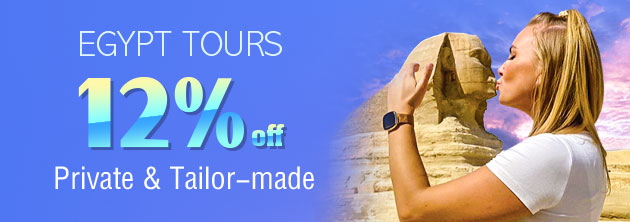Museum of Islamic Art
The Museum of Islamic Art in Bab al-Khalq in historic Cairo is the largest Islamic art museum in the world, as it houses more than 100,000 artifacts of a variety of Islamic arts from India, China, and Iran, and through the arts of Arabia, the Levant, Egypt, North Africa, and Andalusia.
See also Egyptian Art
Location
The museum was inaugurated for the first time on (Shawwal 9, 1320 AH = December 28, 1903 AD) in the field of Bab al-Khalq, the most famous district of Islamic Cairo, and next to the most important Islamic architecture in its eras, indicating the prosperity of civilization, such as the Mosque of Ibn Tulun and the Mosque of Ali, and the castle of Saladin.Accident & Restoration
The museum suffered a car bomb attack on January 24, 2014, which causes a terrible damage and destroyed large amount of artifacts. The attack was intend to target the Cairo police headquarters not far from the museum. The Ministry of Antiquities said that the cost of developing the museum, before the accident, amounted to more than 107 million pounds, and indicated that this number needs to be doubled after the accident, to restore it to what it was. After several years of restoration, the museum reopened in 2017.Sections of the Museum
The Islamic Museum is divided according to the eras, artistic elements, and styles, from the Umayyad, Abbasid, Ayyubid, Mamluk to Ottoman periods, and it is divided into 10 sections according to the artistic elements: metals, coins, wood, textiles, carpets, glass, decoration, jewelry, weapons, stones, and marble.The Islamic Museum consists of two floors: the first contains seven exhibition halls, and the second contains stores and an area for the restoration of antiquities. The museum collects more than 100,000 artifacts belonging to all countries of the world, including a rare collection of textiles, seals, glass, Ottoman ceramics, Iranian and Turkish carpets, as well as a set of astronomy and engineering tools that were used in the Middle Ages, and a huge collection of surgical and cupping machines that were used in the era of Islamic times. They were characterized by prosperity in all fields of medicine, engineering, and chemistry.
According to the new plans, the exhibition inside the museum will be divided into two parts:
The museum has completed halls for selling gifts, and a hall designed in an Islamic style for VIP visitors. It also includes 10 sections expressing the elements of Islamic arts, from the early Islamic era to the family of Muhammad Ali, including:
1. Department of Ceramics and Pottery
It includes various types of ceramics and pottery in Egypt since the Umayyad era, the excavations of Fustat, the ceramics with metallic luster that was famous in the Fatimid and Mamluk periods in Egypt, Iranian ceramics, Ottoman ceramics and pottery attributed to "Rhodes and Kutahya," Iranian porcelain of Sultanabad style, and Chinese porcelain.2. Timber
It includes different kinds of Umayyad wooden artifacts, the Tulunid excavations with the Abbasid Samarra style in Egypt, all the archaeological pulpits of the Fatimid, Ayyubid and Mamluk periods, wooden veils, reciter chairs in mosques and archaeological mosques, and groups of wooden boxes belonging to the Muslim sultans and princes, all executed by means of combined fillings and binding and gilding, engraving and anthropomorphism.3. Minerals
Perhaps the most important holdings of the museum of Islamic metals are Mamluk candlesticks, astrolabes, basins, chandeliers, and chairs, all attributed to sultans and princes, and they are decorated with gold and silver and decorated with Islamic writings and motifs.4. Glass
The museum contains collections of Islamic glass in Egypt and the Levant, especially in the Mamluk and Ayyubid eras, including enameled cups and some are the most important artefacts of glass art.5. Textile
The most famous fabrics in the museum are Egyptian Qabati weaving, Fayum weaving, Tulunid styles from the Umayyad and Abbasid periods, silk and brocade weaving, and the weaving from the Mamluk period.Importance
The importance of this museum is due to its being the largest educational institute in the world, specializing in the field of Islamic antiquities and Islamic art. This confirms the diversity of its collections, which include different types of arts such as metals, woods, textiles, etc., or in terms of the country of origin, such as Iran, Turkey, Andalusia, and others.Historical overview:
The first idea to establish a museum of Islamic art and antiquities appeared in the era of Khedive Ismail in 1869 AD, when Frantz Pasha collected archaeological artifacts dating back to the Islamic era, in the eastern iwan of Al-Hakim Mosque. Later, interest in collecting artifacts increased as the Committee for the Preservation of Arab Antiquities was established in 1881 AD, and it was taken from Al-Hakim Mosqu.When Hertz Bey saw the lack of space in the courtyard of the mosque, the opinion settled on to construct the current building in Bab al-Khalq Square and it was then called "Dar al-Athar al-Arabiya." The foundation stone was laid in 1899 AD, and the building was completed in 1902. Then the artifacts were transferred to it, and Khedive Abbas Helmy inaugurated it on 28 December 1903. There were 111 masterpieces contained in the museum in 1882, and this number gradually increased and it reached nearly 3,000 at the opening of the house in 1903. After that, the dedication of princes, kings, and amateurs followed. The name "Dar al-Athar al-Arabiya" later had been changed to "Museum of Islamic Art," given that Islamic art includes all Arab and other Islamic regions throughout the Islamic empire.
Ticket Prices for the Islamic Museum
The price of an entry ticket for an individual is 120 Egyptian pounds, and the price of the camera is 10 Egyptian poundsOpening Hours
![]() From Saturday to Thursday: 9:00 AM to 5:00 PM
From Saturday to Thursday: 9:00 AM to 5:00 PM
![]() Friday: 9:00 AM to 11:30 AM, 1:30 PM to 5:00 PM
Friday: 9:00 AM to 11:30 AM, 1:30 PM to 5:00 PM

